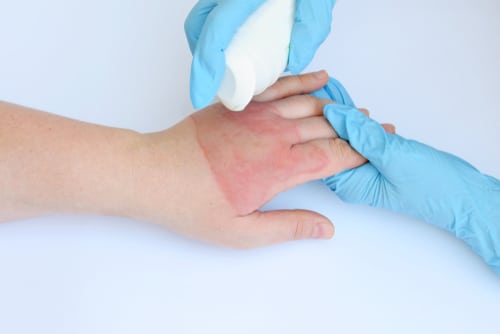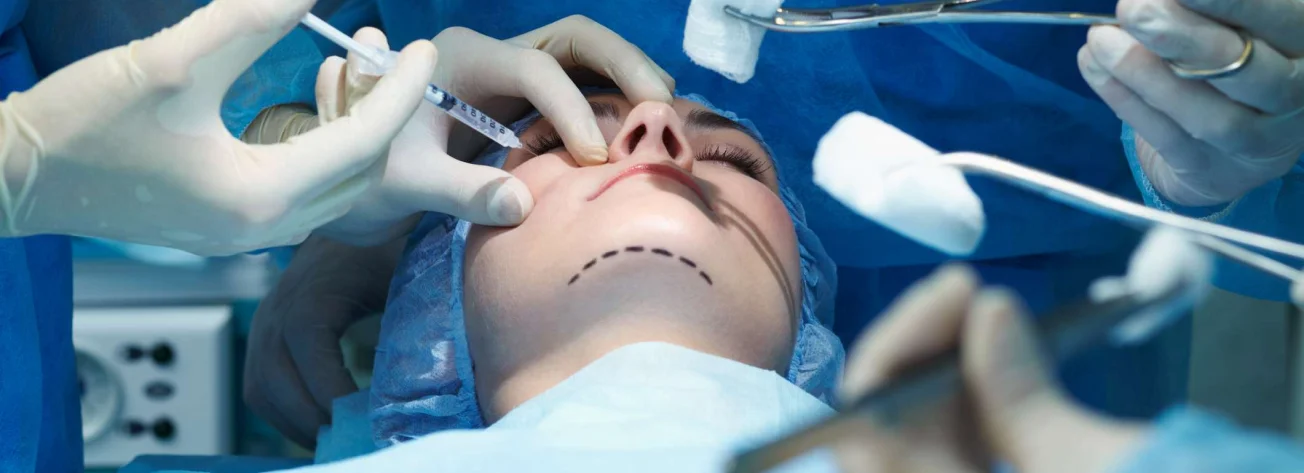Understanding the Burn Surgery Process
Acute Surgery
Acute burn surgery focuses on immediate intervention. Surgeons in the hospital work swiftly to remove damaged tissues and cover the burn area as part of urgent procedures, with the care team assisting. This phase, often occurring within hours or days after the injury, is crucial for inpatient burn wounds treatment in the hospital, leading to scar maturation.
The goal is rapid closure of wounds. This reduces infection risk in the hospital, prepares the ground for healing during urgent procedures, and supports the inpatient care team. Acute surgeries in the operating room are critical in the initial stages of burn care for addressing problems with tissues and scar maturation.
Reconstructive Surgery
Reconstructive burn surgery comes later. It might start weeks, months, or even years after the initial injury, involving scar maturation and tissues. The aim here shifts towards improving function and appearance.
Surgeons use skin grafts, flaps, and other techniques involving tissues to reduce scarring and restore mobility. These surgeries are planned based on individual healing progress and scar maturity.
Multidisciplinary Approach
A multidisciplinary team is crucial for managing severe burns. This team includes trauma surgeons, plastic surgeons, nurses, physiotherapists, and psychologists.
They ensure comprehensive care from acute to reconstructive phases. Their collaboration optimizes outcomes for patients undergoing burn repair surgery.
Transition to Reconstruction
The journey from acute care to reconstructive strategies is gradual. It involves constant evaluation of healing tissues and psychological readiness of the patient.
This transition underscores the importance of patience and resilience both by patients and healthcare providers. It’s a testament to how complex and long-term burn recovery can be.
Techniques in Surgical Burn Procedures
Skin Grafts
Skin grafts are a cornerstone in burn repair surgery. Surgeons often use them to cover large wounds. They take a thin layer of skin from an unaffected area and transplant it onto the burn wound. This helps in quick healing.
The choice between split-thickness and full-thickness grafts depends on the wound’s size and depth. Split-thickness grafts involve taking a thinner layer, ideal for larger areas. Full-thickness grafts, involving both the epidermis and dermis, suit smaller, deeper wounds.
Non-Operative Methods
Beyond surgery, non-operative techniques play a crucial role. Scar massage can soften and flatten scars over time. Pressure garments help in scar maturation by applying constant pressure. These methods complement surgical interventions, aiming for better functional and cosmetic outcomes.
They are especially vital for areas requiring flexibility, such as hands.
Innovative Techniques
Tissue expansion represents a significant advancement in burn surgery. It allows for the growth of extra skin near the wound site. This extra skin is then used to reconstruct the area with a closer match to the original appearance.
This technique offers an alternative to traditional skin grafting, promising improved cosmetic results. It’s particularly useful when donor skin is scarce or when striving for minimal scarring.
Addressing Tissue Deficiency in Burns
Skin Grafts
Skin grafts play a crucial role in burn repair surgery. They involve transferring skin from an unaffected area of the patient’s body to the burn site. This process helps cover areas where tissues are missing due to severe burns.
Doctors select donor sites with care. They aim for minimal scarring and optimal healing at both the donor and recipient sites. However, finding an exact match in texture and color can be challenging.
Donor Flaps
For deeper burns affecting not just the skin but also underlying structures like missing bone, donor flaps are vital. These flaps consist of skin, muscle, or bone taken from another part of the body. They help restore function and appearance.
The complexity increases when matching these tissues to damaged areas. Surgeons must consider blood supply and integration with existing tissues for successful outcomes.
Tissue Expansion
Tissue expansion offers a solution to the deficiency of available donor skin. It involves stretching nearby healthy skin to cover burn areas. Over time, this method allows for the growth of additional skin that closely matches the surrounding area.
This technique reduces the need for external donor skin, leading to a more natural appearance post-surgery. Yet, it requires patience and multiple procedures over months.
Exploring Reconstructive Burn Treatment Options
Operative Benefits
Operative treatments for burn scars focus on removing scar tissue and improving functionality. These methods can significantly enhance mobility in affected areas. They often involve skin grafts or flap surgery.
Operative treatments offer a targeted approach to managing deep and extensive burns. They are crucial for restoring function in severely damaged tissues.
Non-Operative Advantages
Non-operative treatments, such as laser therapy and silicone sheets, aim at reducing the appearance of burn scars. They are less invasive and come with shorter recovery times.
These methods work well for milder burn injuries. They help improve the skin’s texture and color without the need for surgery.
Choosing Techniques
Selecting the right reconstructive technique depends on the burn’s severity, location, and the patient’s health. Specialists consider these factors to tailor treatment plans that offer the best outcomes.
For deep burns, operative methods might be necessary. For superficial ones, non-operative options could suffice.
Technological Advances
Recent advancements in reconstructive treatments have led to better aesthetic and functional results. Innovations like laser therapy and regenerative medicine play a significant role.
These technologies reduce scarring and improve recovery times. They represent a leap forward in treating burn injuries.
Benefits of Reconstructive Burn Surgery
Physical Healing
Reconstructive burn surgery goes beyond initial wound closure, addressing abnormally thick, wide, or discolored scars. This surgical intervention can significantly enhance mobility in affected areas. For instance, patients with tightened skin due to scarring often struggle with movement. Through tailored surgical techniques, surgeons can release these contractures, greatly improving the patient’s range of motion.
Patients experience a notable reduction in physical discomfort post-surgery. The removal or refinement of scar tissue not only alleviates pain but also restores functionality to the injured area.
Aesthetic Restoration
Facial scarring presents unique challenges, impacting not just appearance but also basic functions like blinking or mouth movements. Reconstructive surgery offers significant improvements in the appearance of eyelids, lips, and nose. It can also address hair loss areas, restoring a more natural look. These enhancements play a crucial role in boosting self-confidence and overall well-being.
The precision in treating facial scars ensures that features retain their natural contours as much as possible. Surgeons work meticulously to minimize visual reminders of the trauma, helping patients reclaim their identity.

Psychological Impact
The psychological benefits of reconstructive burn surgery are profound. Patients report increased self-esteem and a more positive body image post-surgery. This emotional healing is vital for full recovery, offering individuals a renewed sense of normalcy and hope for the future.
Timeline for Reconstruction Procedures
Initial Timing
The journey to recovery begins with understanding the timeline. Typically, reconstructive procedures might start after the initial wound has healed. This could range from weeks to months post-injury.
It’s crucial to allow time for the wound to stabilize. Only then can surgeons assess the area and plan for reconstruction. The healing process dictates when this crucial step can occur.
Influencing Factors
Several factors influence the timing of reconstructive surgery. The extent of scar maturation plays a pivotal role. Surgeons wait for scars to mature before proceeding.
Patient readiness is another critical factor. Both physical and emotional readiness matter in this journey. Each patient’s case varies, affecting the timeline significantly.
Patience and Expectations
Patience is key in burn repair surgery. Some treatments for scar tissue take months to show results. It’s important to set realistic expectations early on.
Understanding that the range of outcomes varies helps manage anticipation. The road to recovery is long but worth it for many patients.
Guidelines for Post-Surgery Care
Follow Instructions
After leaving the operating room, verified patients must adhere strictly to their care team’s advice. This includes taking prescribed medications, managing wound care, and recognizing signs of complications.
Patients often underestimate the importance of these instructions. Yet, they play a crucial role in preventing infections and ensuring wounds heal correctly. Ignoring this guidance can lead to setbacks in recovery.
Attend Appointments
Follow-up appointments are non-negotiable for anyone who has undergone burn repair surgery. These sessions allow the care team to assess healing progress and address any concerns promptly.
Missing an appointment might mean overlooking a critical issue that could affect recovery outcomes. Therefore, it’s vital to prioritize these visits to the hospital or clinic as part of your post-surgery care plan.
Consider Therapy
To regain full range of motion and ensure complete recovery, physical or occupational therapy may be necessary. This step is often overlooked but is essential for optimal healing.
Therapy helps patients overcome challenges related to mobility and daily activities. It supports the journey back to normalcy after a significant procedure like burn repair surgery.
Scheduling a Consultation for Burn Surgery
Surgeon Selection
Selecting the right surgeon is crucial. Look for one with extensive experience in reconstructive burn surgery. They should be board-certified and have a proven track record.
Patients must ensure compatibility. A good rapport makes communication easier. This step is vital before moving forward.
Medical History
Prepare a detailed medical history. Include past surgeries, current medications, and any allergies. This information helps the surgeon assess your situation accurately.
A thorough physical examination is also necessary. It allows the surgeon to understand the extent of the burn damage. Together, these steps form the foundation of your treatment plan.
Risk Discussion
Understanding potential risks and complications is essential. Discuss these openly with your surgeon during your visit. They should provide clear explanations and realistic expectations.
Ask questions about anything that concerns you. A well-informed decision is key to feeling confident about your surgery.
Summary
Navigating the journey of burn repair surgery can seem daunting, but understanding the process, techniques, and care involved empowers you to make informed decisions. From the initial consultation to post-surgery guidelines, each step is crucial for successful recovery and optimal outcomes. Reconstructive burn surgery offers not just physical restoration but also a pathway to regain confidence and improve quality of life. With advancements in surgical procedures and a comprehensive approach to addressing tissue deficiency, patients have access to effective treatment options tailored to their specific needs.
Taking the first step towards reconstruction is a significant decision. Remember, choosing a skilled surgeon and following recommended care post-procedure are key factors that contribute to the success of your journey. If you’re considering burn repair surgery, don’t hesitate to schedule a consultation with a specialist. It’s your time to embrace healing and move forward towards recovery. Let this be your moment to take control of your healing process and explore the possibilities that reconstructive surgery can offer.
Frequently Asked Questions
What is the process of burn repair surgery?
Burn repair surgery involves assessing the injury, removing damaged tissue, and using various techniques to restore function and appearance. Techniques may include skin grafts, flap surgery, and tissue expansion.
What techniques are used in surgical burn procedures?
Techniques include skin grafting, where healthy skin is transplanted to the burn area; flap surgery, involving transferring living tissue from one part of the body to another; and tissue expansion, which encourages the body to grow extra skin for use in reconstructive procedures.
How does burn surgery address tissue deficiency?
Burn surgery addresses tissue deficiency by transplanting skin or using artificial dermal replacements to cover large wound areas. This helps in restoring both function and appearance to the affected areas.
What are my options for reconstructive burn treatment?
Options include primary closure, skin grafts, local or free flaps for more significant defects, and microsurgery for intricate reconstructions. The choice depends on the burn’s severity and location.
What are the benefits of reconstructive burn surgery?
Reconstructive burn surgery can significantly improve both functional abilities and cosmetic appearance. Benefits include increased mobility in affected areas, reduced scarring, and enhanced psychological well-being.
How long does it take to complete reconstruction procedures?
The timeline varies significantly depending on the extent of burns and chosen procedures. Some may require multiple surgeries over months or years for optimal results.
What should I follow for post-surgery care?
Post-surgery care involves wound management, pain control, physical therapy if needed, and adherence to surgeon’s instructions on activity levels. Regular follow-up appointments are crucial for monitoring recovery progress.
How do I schedule a consultation for burn surgery?
Contact a specialized burn treatment center or a plastic surgeon with experience in burn reconstruction. They will provide an initial evaluation to discuss your needs, options, and plan your treatment course accordingly.





